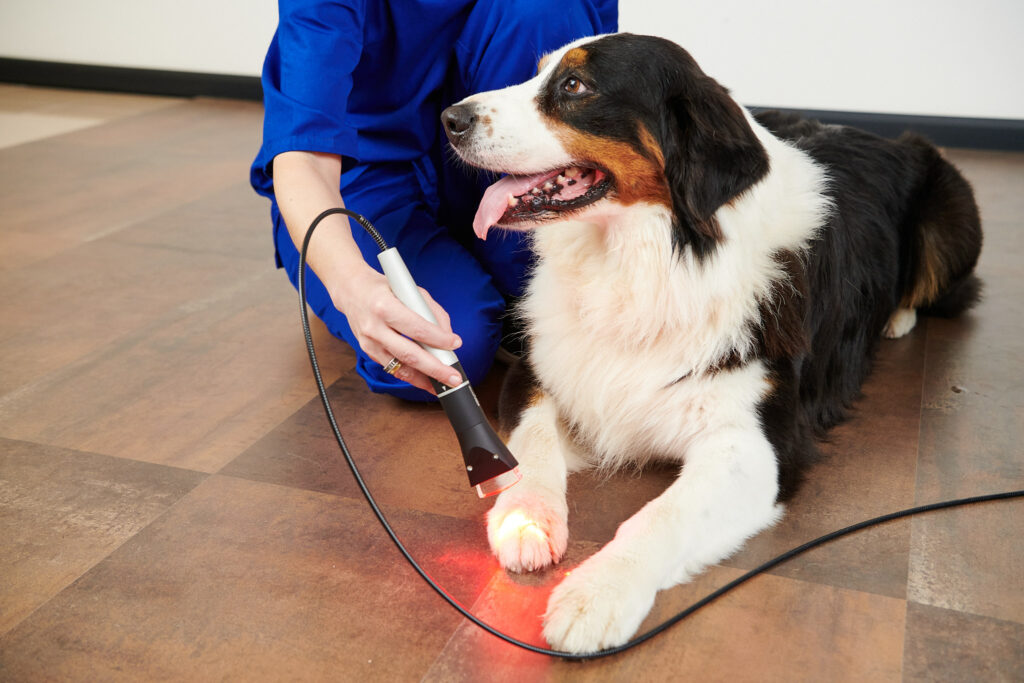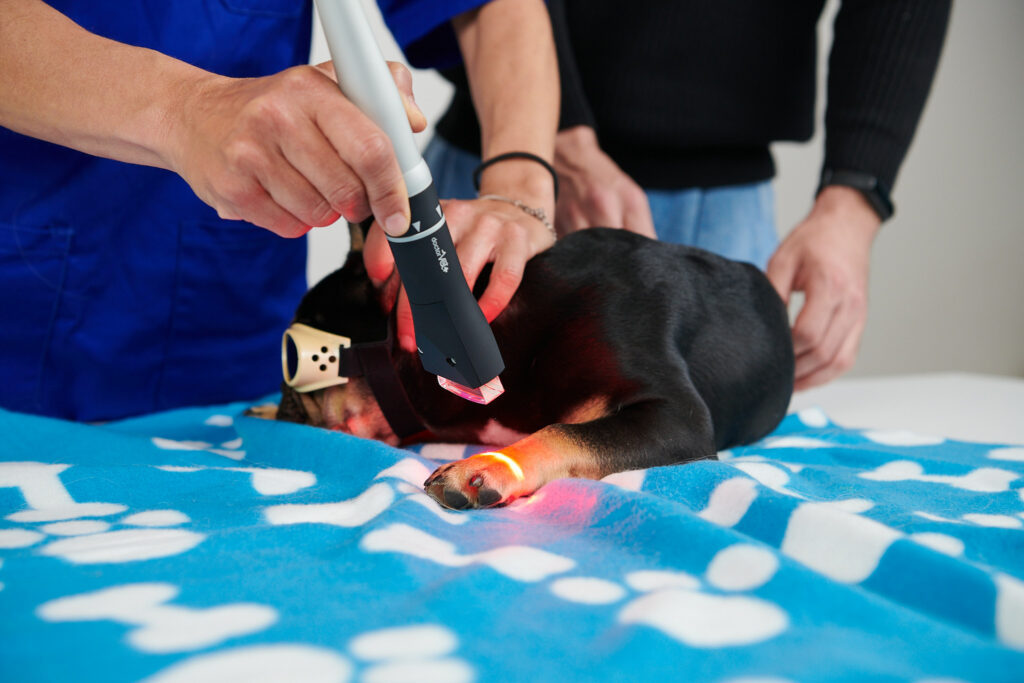Lick granuloma or acral lick dermatitis is characterised by the compulsive licking of a limited area of the lower portion of the extremities, usually the dorsal zone of the carpus and metacarpus or the dorsal zone of the tarsus and metatarsus. It is usually an isolated wound (74%) and unilateral, with only 10% of cases involving all four limbs1.
A firm, alopecic and thickened oval plaque is produced to begin with. Hyperpigmentation, fibrosis and secondary bacterial infections appear when it becomes chronic. 50% of the micro-organisms that cause these secondary infections are resistant to antibiotics2.
Numerous factors are involved in lick granuloma, it being essential to diagnose the underlying or perpetuating causes of the disease.
These causes include dermatological problems (possibly atopic dermatitis, allergies, food intolerances or deep pyoderma), ectoparasites, neoplasia (of varying origin), neuropathies, hypothyroidism, leishmaniasis, sporotrichosis and orthopaedic problems3.
Behavioural problems are another cause of granuloma. Several of these causes may co-exist in a single patient.
Due to the various trigger or perpetuating factors, a correct diagnosis is essential via correct anamnesis and examination, including the necessary complementary exams to discover the source of the problem.

Due to the chronic nature of this process, multimodal treatment is the most recommended. This would include the correct antibiotics based on the results of a culture, the use of drugs to combat anxiety and other treatments based on the trigger causing the lick granuloma.
In this case, laser therapy can be useful as an adjuvant therapy given that its healing ability4 is one of the most studied effects, potentially accelerating the process by 30-40%. We should not only think about treating the lick granuloma but also the trigger and perpetuating factors of the pathology (easing the neuropathic pain and treatment of Leishmaniasis, among others) 5.6. Laser use is ruled out in cases of tumoral origin.
Certain authors recommend the use of high doses due to the chronic nature of the process, as well as numerous treatments. The recommended dose in these cases is 30-40 J/cm2. Schenedeker et al published a study in 2021 on the effect of laser on lick granuloma in which they observed how the skin grew more quickly in the group treated with laser when compared with the control group, observing a tendency towards wound improvement but not of a significant nature when compared with the control group7. Perhaps the selected parameters and the dose used should be studied in more detail. Another of the useful options that could be considered is photodynamic therapy, especially for resistant infections. However, more studies are needed in this regard.

Seeing is believing!
Book a demo now to learn how DoctorVet works!
Hence, DoctorVet becomes a useful tool for lick granuloma, both for treating the primary cause and the wound. Four different protocols are selected based on the origin. A combination of deep infection, open wound and inflammation is recommended for treating the wound. The scanner hand tool is recommended, with the sweep treatment technique in non-contact mode. The treatment schedule should start at 3-4 times/week until an improvement is observed, followed by spacing of the sessions. Maintenance sessions are necessary on occasions, taking place once every four weeks.
It is important to remember that the use of laser is not recommended in cases of lick granuloma associated with a tumour.

Via dell’Impresa, 1
36040 Brendola (VI)
VAT 02558810244
C.R. VI 240226
© Copyright 2016-2021 LAMBDA S.p.A. | Privacy Policy